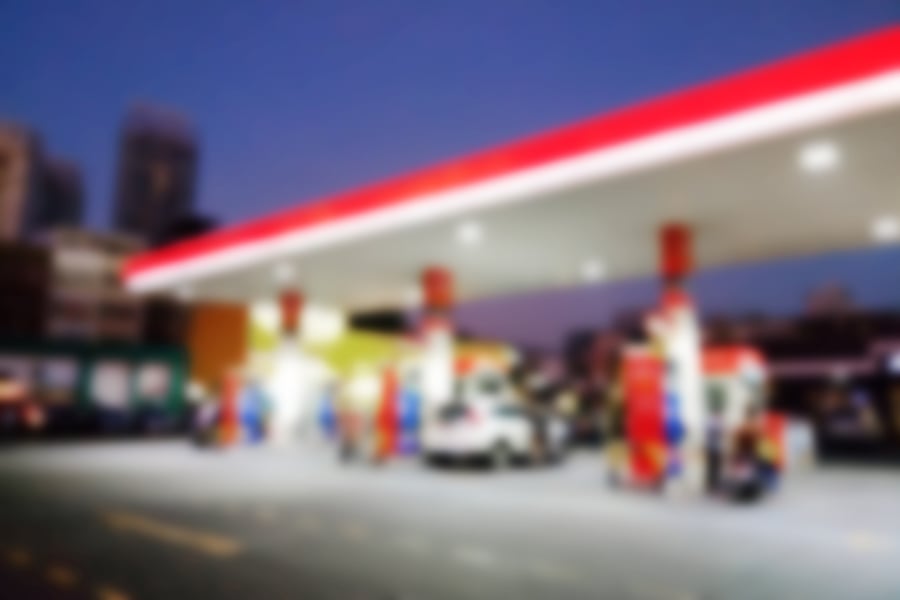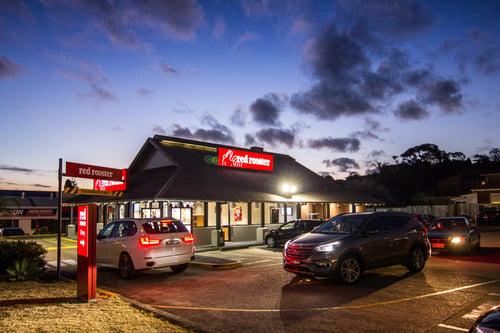Skimming: How to Outsmart the Crooks and Protect Your Gas Station

We’ve all heard the horror stories: a customer fills up at your gas station and moments later they call to report that their credit or debit card information has been stolen. The local news station hears about the incident and within a few hours a reporter is on your driveway to record a story encouraging customers to be cautious when filling up at your station.
If this nightmare scenario has happened to you, keep reading. If it hasn’t, keep reading!
To better understand how to protect your gas station and customers, you’ll need to know the intentions behind skimming and the types of devices used by thieves.
What is skimming and how is data being stolen?
Skimming is a form of payment card fraud and theft when thieves obtain unauthorized data to sell the information on the dark web, use the account to make purchases online, and create cloned credit cards that they often use to engage in stealing fuel. Thieves break into fuel dispensers using universal keys and specialty tools that can be bought online or at your local hardware store. What is more shocking, skimming devices can be made for just a few dollars, making it a low risk high reward form of crime.
There are two types of skimmers
1. ExternalSkimmers are placed on top of the card reader slot and keypad. A “shimmer” is an external skimming device that places a sleeve inside of a card reader slot and is nearly undetectable.
2. InternalInternal skimmers are placed inside the fuel dispenser and are more difficult to detect. These skimmers are installed by opening the dispenser door and attaching hardware to existing electrical components.
Across the U.S., footage captured by gas station security cameras show just how quickly thieves can install a skimming device. In some instances, skimmers have been installed inside fuel dispensers in less than 15 seconds.
To make matters worse, once a skimming device is installed, rarely is it ever retrieved. Why? Technologies like Bluetooth, cell phone messaging, and near-field communication (NFC) allow thieves to capture data from 30 feet away to anywhere in the world.
When Skimming Occurs, Who is Liable?
According to the National Association of Convenience Stores (NACS), every day 29 million Americans refuel using a credit or debit card. While there are no hard statistics on the extent of skimming, since it is a local crime and not centrally tracked — the United States Secret Service says the bulk of these crimes are carried out by Cuban- and Romanian-born nationals who are using various methods in a number of states to scam money from businesses and people.
Currently, gas stations are not liable for any fraud that occurs at the pump. However, the nationwide shift to Europay, Mastercard, and Visa (EMV) — a chip and pin payment system developed to make credit and debit card transactions more secure — will shift liability to gas station owners for fraudulent transactions. This transition will occur after October 1, 2020 on fuel dispensers that are non-EMV compatible.
While each state has its own regulatory agency who’s Weights and Measures program enforces guidelines for skimming at fuel dispensers, the National Institute of Technology and Standards (NIST) has formed a Weights and Measures Skimming Task Group to develop requirements that make it more difficult for thieves to install skimming devices. The Skimming Task Group will include the new user requirements in the Weights and Measures Handbook and develop an education and awareness campaign encouraging retailers to make stopping thieves as part of their corporate DNA and structure.
A Retailer’s Best Practice to Prevent Skimming at Fuel Dispensers
Skimming is a pervasive problem and illegal technology is advancing at an alarming rate. Retailers and manufacturers must begin to adapt their operations and technology to prevent thieves from compromising fuel dispensers.
A survey commissioned by CompareCards found that 1 in 5 millennials believe they have fallen victim to credit card skimming when filling up their vehicles. When skimming occurs, it’s bad for business: negative PR, loss of customers and money, and a drain on staff and resources can have an immediate impact on a gas stations profitability once word gets out that a customer has been skimmed.
Fortunately, there are numerous ways retailers can protect their business and preserve the customer experience:
- Rekey locks on dispenser doors that have access to electronic payment data. Customizing locks are good start to preventing thieves from opening doors on fuel dispensers.
- Purchase or upgrade fuel dispensers with a separate compartment for receipt rollers.
- Consider using serialized security tape over all access doors you wish to protect.
- Invest in anti-breach kits for dispensers offered by manufacturers, which generally notify and shut down dispensers that are accessed without proper security code entry. This can be costly, but it is the ultimate line of defense.
- Site personnel should inspect the fuel island multiple times per shift for any signs of tampering, including logging and matching security tape serial numbers.
- Enhance and strategically place outdoor lighting to help deter criminals and make it easier for store personnel to monitor fuel islands.
- As a best practice, retailers who find skimming devices in fuel dispensers should preserve video footage as it can help criminal prosecutors identify and pursue thieves.
Staying Vigilant
Security is an important aspect of business, one that starts with using great equipment and people. The industry has come a long way since 1984, when PWM’s Karl Adolf Krawinkel started the development and mass production of electronically controlled price signs for the gas station market. For more than 35 years, PWM has stood alongside gas stations and understands the challenges of working as a privately owned company. Much like gas stations, PWM is focused on quality to ensure its customers have the best and most secure experience possible.
Technology is powerful, and when placed in the hands of people with malicious intentions, it can be destructive. Outsmarting the crooks and protecting your gas station from skimming will continue to be a challenge for the foreseeable future. Staying one step ahead by hiring great people, investing in the right technology, and implementing efficient internal policies can help you mitigate your risk and liability when it comes to skimming at fuel dispensers.
Read more;
http://skimmingprevention.org/retailers/
https://www.convenience.org/Topics/Operations/Store-Security/Skimming-and-Payments-Security
https://www.cnbc.com/2018/08/23/millennials-say-theyve-been-victims-of-skimming-at-the-pump.html
https://www.secretservice.gov/investigation/






